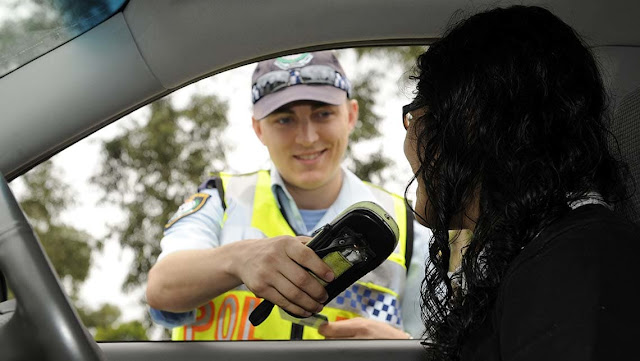'Synthetic drugs', 'research chemicals' and 'legal highs': What are we really talking about here?
 The recent death of Sydney schoolboy Henry Kwan has thrust the issue of so-called 'synthetic drugs' onto the front pages of newspapers across the country. The full details of his death, including toxicology, have not been released as yet, so it is still not completely clear what substance he actually took, but regardless of that fact both the NSW Government and the Federal Government have responded by taking measures to restrict the sales of a number of products that were previously legally available.
The recent death of Sydney schoolboy Henry Kwan has thrust the issue of so-called 'synthetic drugs' onto the front pages of newspapers across the country. The full details of his death, including toxicology, have not been released as yet, so it is still not completely clear what substance he actually took, but regardless of that fact both the NSW Government and the Federal Government have responded by taking measures to restrict the sales of a number of products that were previously legally available.
The problem with this death is that there are a number of elements to the story that have got confused - trying to sort through it all and work out what public health messages need to be developed to prevent future harm is pretty difficult. I'm going to try to give it a 'go' here, so bear with me! As far as I see it there are four main issues that we should be looking at here:
- the rise in interest in hallucinogens (LSD, 'acid', 'trips', mushrooms, DMT, etc) by school-based young people and the belief by a growing number of adolescents that these are 'risk-free'
- a growing number of 'research chemicals' being developed, packaged and sold as 'legal highs', with little, if any information available on the potential negative effects of use
- some young people believing that because of their apparent legal status this means that these 'legal highs' are 'safe' - i.e., 'legal means safe'
- some of these 'research chemicals' being sold as LSD, i.e., users buying trips believing they contain LSD but they are being 'adulterated' with other substances
But it isn't just LSD - naturally-occurring hallucinogens such as 'magic mushrooms' (containing psilocybin), datura and DMT are also growing in popularity. Then we have pharmaceuticals or over-the-counter (OTC) medications that are being misused in an effort to try to achieve a hallucinogenic effect. Most would remember the Stilnox scandal involving the Australian swimming team but many would be surprised to hear that I was at a school recently where a group of young men were using motion sickness medication (10 or 12 at a time) to go 'tripping'. This is certainly not a new phenomenon - do a quick Google search and you can find chat room conversations discussing the use of such products - but put all of these things together and it certainly seems like something is happening in the 'psychedelia' area.
Secondly, the number of 'research chemicals' is growing exponentially. Some may not be familiar with this term but essentially it is an updated version of the term 'designer drugs' (often used to describe drugs like ecstasy or MDMA). It is used to describe substances that are created to avoid existing drug laws, usually by preparing analogues or derivatives of existing drugs by modifying their chemical structure in some way. The really interesting thing about what we are seeing at the moment is the development of substances that have entirely different chemical structures that produce effects similar to existing illicit drugs, e.g., 'synthetic cocaine'. These substances are often referred to as 'synthetic drugs' by the Australian media and really that makes no sense at all - how can you have synthetic LSD? LSD is itself synthetic - the term just doesn't make sense. Research chemicals is a better term, although certainly not perfect ...
The reality is that we simply cannot keep up with how fast these drugs are appearing on the market. Last year the EMCCDA identified 71 new substances (there have been more than 250 since 1997) and many of these are being packaged, marketed as 'legal highs' and sold and the only response that policy makers can come up with is to regularly update their 'banned list' and prohibit the sale of yet another group of products. Do we know anything about the potential harms associated with the use of these substances? Not usually. Most of them are so new that they haven't been tested on animals, there certainly hasn't been any randomised control trials on humans! That said, they're most probably not the healthiest products on the markets, but it really does annoy me when you see politicians and others who should know better who start talking about harms associated with these substances - let's be honest - we have no idea what they will do ... the best we can say is users are really being the guinea pigs for the future!
The one benefit of banning any of these products is that it does change how some young people perceive them. Unfortunately there is the belief by many that if something is legal it must be safe (this is one of the great problems that we have with alcohol) and when something can be bought at the local petrol station it is not surprising that adolescents (as well as many adults) start to think that there can't be anything wrong with it ... Will banning the products stop everyone from using them? Of course not, it is highly likely that a 'black market' will be created and that some people will continue to buy them via criminals that will pick-up the product, but for others, now that it is illegal this will be enough to discourage their future use.
Finally, and most probably most importantly, some of these research chemicals are being sold to users as another drug, e.g., an ecstasy user is being sold a pill he or she believes to be MDMA, when in fact it contains mephedrone. To be honest this is not a major change for stimulant users, ecstasy users rarely even call their drug of choice ecstasy anymore, usually referring to it as a 'pill' now, mainly due to them believing the drug to be of such poor quality and rarely containing MDMA anymore. What is new is that we are now seeing 'tabs' of LSD being sold that actually contain no LSD. Instead we believe that the NBOMe group of chemicals (particularly 25I-NBOMe) are being sold as LSD and this appears to be causing a great deal of problems. Deaths have been reported in the US and Europe and we have recently seen young people presenting to emergency departments across Australia after taking what they believed to be LSD.
That said, I have also talked to quite a few young men (particularly in NSW) who claimed to have intentionally bought what they called '25Is'. They were well aware that they weren't taking LSD, knew little about what this 25I actually was and interestingly all reported that at least one of their group of friends who took it became unwell, with a couple of them having to be hospitalised.
So what does all this mean and what messages should we be giving to young people?
- some information needs to be provided to young people about hallucinogens, particularly that they are not 'risk-free'. We need to be sensible about the information we deliver and not focus on 'death and destruction' - but there are risks and these need to be conveyed to adolescents
- we need to emphasise that 'legal does not mean safe' - this is a difficult one, as many adults in the community hold the belief that the legally available drugs (e.g., alcohol) are somehow safer than the illicits, purely because of their legal status
- it is imperative that we get a message to hallucinogen users that LSD is being adulterated or that they are being sold something as LSD that is in fact another substance altogether - that is, you may not be buying the drug you think you are. LSD is not risk-free, but the substance you are purchasing and potentially taking may be much more risky.



It is sad to know about the tragic story of the school boy,this story tells that research chemicals are highly dangerous if in takeninto
ReplyDeletehigh doses without any consultation.
I believe this is actually the most useful blog I've been through this entire day. legal highs kaufen
ReplyDeleteThe media's awful, misinformed reporting lacking and eduactional value is a big part of the problem. We aren't educating the parents or kids by having journalists write stories on topics thehy know nothing about with the sole intent of fear mongering. So the public will continue to be unaware of drugs such as nmbome or research chems. legalizing and regulation of hallucinogens would make them virtually harmless, eliminating the presence of dangerous alternative reserach chems and limiting the possibility of overdose if it comes in a regulated FDA approved dosing form. It would be much safer than having alcohol be legal, and would eliminate all these unneccesy deaths, but thats never gooing to happen.
ReplyDeleteGreat post admint you doing great work keep it up
ReplyDeletetadalafil
ReplyDeleteResearch chemicals are chemical substances used by scientists for medical and scientific research purposes. One characteristic of a research chemical is that it is for laboratory research use only.
research chemicals
Great work! I want to disseminate this information to everyone as possible so, everyone knows how the chemicals are dangerous for human life. Thanks for taking the time to write it and post it.
ReplyDeletePosted by: Caitlyn | Buy Synthacaine Online
Research chemicals are chemical substances used by scientists for medical and scientific research purposes. One characteristic of a research chemical is that it is for laboratory research use only.very nice blog and informative post . Thank you.RESEARCH CHEMICALS PRAMIPEXOLE
ReplyDelete